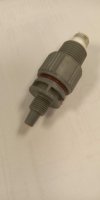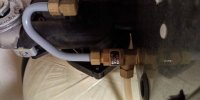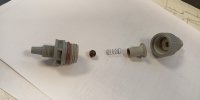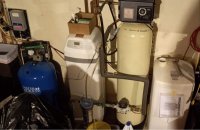edleit
New Member
My softener includes an external bleach jar which tees into the brass brine valve. The bleach jar has been overflowing during recharge cycles, so I disassembled it to find the inner parts coated in sediment and white goo.
I have not been able to find any indication of a part number that I can use to order a replacement. Any ideas?
Thanks, Ed
I have not been able to find any indication of a part number that I can use to order a replacement. Any ideas?
Thanks, Ed






